First up is the face cropped close. In this shot I have increased the impact of the cropping by asking my wife to look at me over the top of the newspaper she was reading.

Removing the mouth and cropping this closely removes a lot of the visual clues we use to judge mood and character. I think that eyes shot this close give the impression that we can se the inner thoughts of the subject. To my mind Marion looks worried in this photo – which she wasn’t - which coupled with the hint of a newspaper in the foreground provides some interesting narrative possibilities. Pulling slightly further back, but still cropped close, this next shot is probably a more conventionally pleasing shot but leaves less to interpretation because of the smile. Even so there is little context here to provide information about the subject.
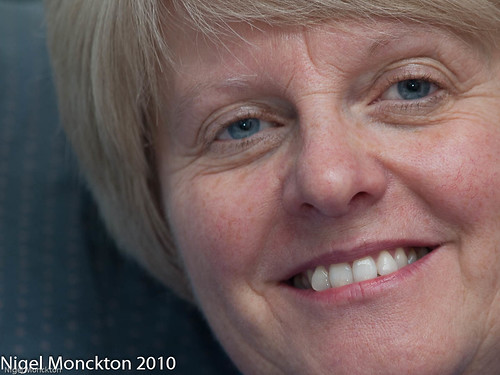
At the end of the exercise I took a similarly scaled shot from a different angle. In this example there is sufficient extra information to provide context, and a range of additional information about the subject.
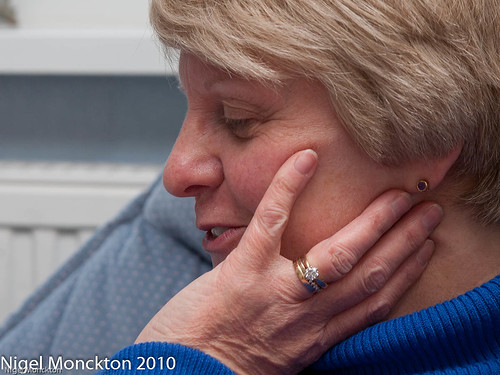
Clearly the subject is married, we can make an estimate of her age range and there are enough clues to show that she is in a living room and reasonably relaxed.
Returning to the letter of the exercise – next up is a conventional head and shoulders shot. The lighting could be improved (the entire exercise was completed with on-camera flash bounced from the ceiling), but this is otherwise unremarkable. There is little more context than in the 2nd shot above.
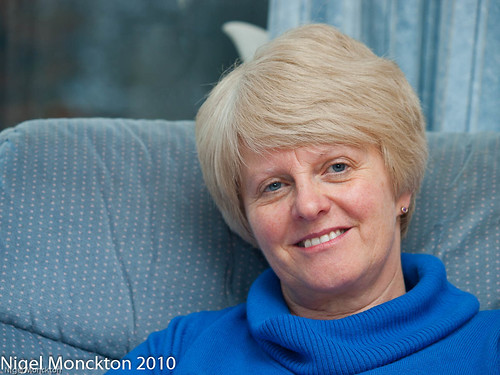
Moving on to a torso shot – first up a conventional example.

The subject is clearly relaxed and almost certainly at home. We also start to gain information about the surroundings of the property viewed through the window. As the scale becomes larger it is clear that more care is needed in selecting the surroundings – in particular the jug behind the head is a distraction in the remaining shots in this series.
By raising the newspaper the following shot, at a very similar scale, has a different feel to it – perhaps the subject was surprised or interrupted. Also the reference to shock in the headline is at odds with the facial expression – again the additional context provides some extra narrative.
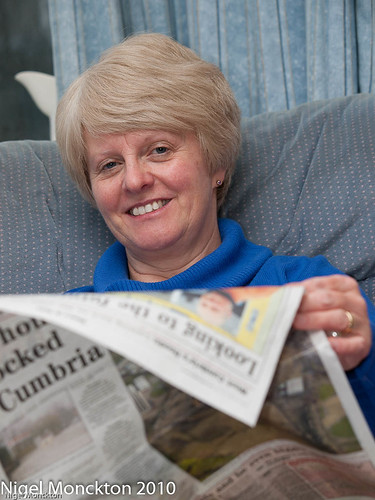
And finally – the full length shots – possibly a bit of a cheat here as my wife is comfortably ensconced in a recliner chair, but I’ve certainly included here head-to-toe. First up a portrait format shot, again with a newspaper held up.
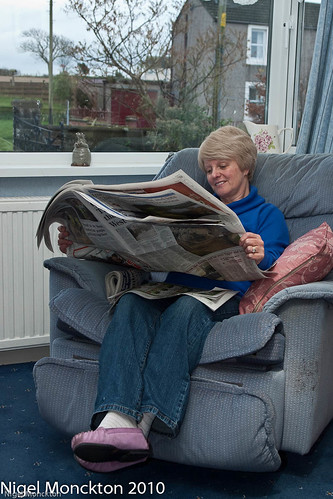
Plenty of context – the shot is clearly at home and the surroundings as seen through the window are probably rural. the lack of eye contact gives it the feel of a ‘candid’ shot rather than a posed portrait, and with hindsight it may be better cropped so that the head is higher in the shot. Personally I prefer this version:
 .
.In spite of being more obviously set up, the subject is clearly relaxed. There is enough context to provide some insight to what she’s doing and the face is much better positioned in the frame, so that even though her eyes are quite small their is still contact.